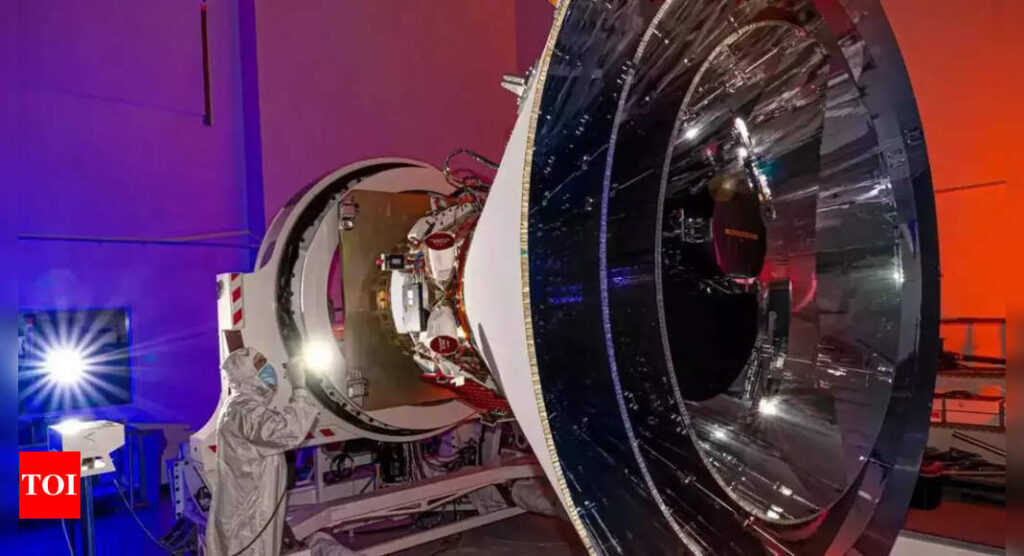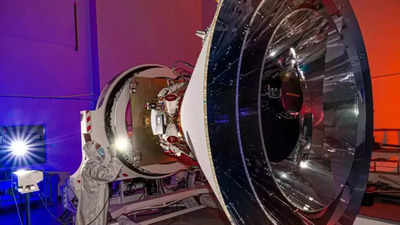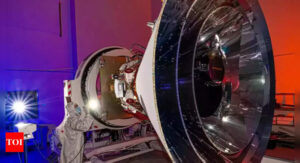
NASA‘s SPHEREx mission is set to launch in late February 2025, a landmark moment in space exploration. SPHEREx is the acronym for Spectro-Photometer for the History of the Universe, Epoch of Reionization and Ices Explorer, a state-of-the-art infrared telescope designed to map the entire sky in unprecedented detail. SPHEREx will have unique capabilities to provide astronomers with a panoramic view of the universe, helping to answer some of the most fundamental questions about the cosmos.
What is SPHEREx?
SPHEREx is no ordinary space telescope; it is going to change our perception of the universe. It will be an all-sky survey mission, whereas other surveys like JWST are targeting specific cosmic objects. SPHEREx will photograph the cosmos in 102 infrared colors. This broad base of observation will give invaluable data related to almost all aspects, from how galaxies are formed up to building blocks of life in our Milky Way galaxy.
NASA SPHEREx mission will launch in late February
The mission will launch on a SpaceX Falcon 9 rocket on February 27, 2025. It will put the telescope in a sun-synchronous orbit, which is important to keep it away from the heat of the sun, ensuring that the telescope remains cold enough to take infrared light, a critical part in seeing through cosmic dust and revealing objects that are invisible in visible light.
SPHEREx significance
SPHEREx will provide vital data on the early universe, the forces behind cosmic inflation, and the ingredients for life in our galaxy. By offering a broad, all-sky perspective, it will complement other telescopes like the JWST and help scientists investigate cosmic phenomena that were previously difficult to study. SPHEREx will be a valuable tool for future astronomical research and may help rewrite our understanding of the universe’s origins and evolution.
How SPHEREx’s $488 million mission is set to rival costly space telescopes?
What makes SPHEREx remarkable is its affordability. While it took $10 billion to finance the James Webb Space Telescope (JWST), SPHEREx was conceptualized at $488 million. In fact, though the mission cost was several orders of magnitude smaller, according to NASA officials, SPHEREx will triumph in some dimensions, particularly where its ability to image the whole sky and image cosmic structures to an unprecedented detail is concerned. Scheduled to be released no earlier than February 27, SPHEREx could well be the harbinger that opens the universe’s most profound secrets—what did happen at dawn time?
How does SPHEREx differ from JWST?
While the James Webb Space Telescope has amazed us with its close-up images of distant galaxies, new stars, and exoplanets, the mission has generally targeted specific sites in deep space. SPHEREx, in contrast, is designed for an all-sky survey, recording data across 102 infrared colors—a far broader spectrum than that of the JWST.
This megaphone-shaped telescope will take 600 images per day, gradually constructing a comprehensive sky map every six months. Over its 27-month mission, SPHEREx will complete four full scans of the sky, providing a sweeping view of the universe on an entirely new scale. Slightly larger than the JWST at 8.5 feet tall and 10.5 feet wide, SPHEREx will collect vast amounts of data on millions of celestial objects in a remarkably short time.
While JWST will be used for zooming into distant deep space phenomena, SPHEREx will map the vast patterns across large cosmic distances to offer fresh knowledge on how the universe is shaped. Data provided by the instrument will greatly serve to chart out future missions of space as the JWST, and another scheduled Nancy Grace Roman Space Telescope pinpoint other specific sites of interest.
NASA SPHEREx major objectives
- Mapping the entire sky in infrared
One of the most revolutionary aspects of the SPHEREx mission is its ability to map the whole sky. Although telescopes such as the JWST focus on specific targets, SPHEREx will observe the whole sky in 102 infrared colors, thereby giving a total view of the distant galaxies, stars, and cosmic phenomena. This will give scientists a broad map of structures and evolutionary patterns in the universe.
- Cosmic inflation exploration
SPHEREx will also focus on one of the most important theories in cosmology: cosmic inflation. This theory posits that the universe underwent rapid expansion moments after the Big Bang, increasing in size by a trillion-trillionfold in an incredibly short time. By studying the large-scale distribution of matter across the universe, SPHEREx will provide data that could help scientists better understand the forces behind this inflationary period and how it shaped the universe’s current structure.
- Searching for life’s building blocks
Another significant mission objective of SPHEREx is to search for organic molecules in our Milky Way galaxy. Such molecules, since they are crucial for life, are often found in interstellar clouds where the action of star or planetary formation takes place. The detection of such molecules could provide critical leads in understanding how life originated on Earth and may have originated elsewhere in the universe.
- Complementing other space missions
SPHEREx will collaborate with other space observatories, like JWST, for an even fuller view of the cosmos. Where JWST focuses its attention to narrow regions in space, SPHEREx will survey the sky completely, leading future research efforts.
Data collected from SPHEREx will further provide insights to missions that observe the distribution of organic molecules in space, including NASA’s OSIRIS-REx.
SPHEREx: Advanced infrared technology and efficient design for space exploration
SPHEREx has advanced infrared detectors that will run at a temperature of around -210°C. This is the minimum requirement to get infrared images with a clarity of definition as they require cooling down in order to reduce interference by heat with the telescope’s faint detection of cosmic light. The spacecraft will rely on passive cooling, so it doesn’t require electricity or coolants for maintaining the required low temperatures under normal operation.
In order to shield its sensitive infrared instruments from the sun’s heat, SPHEREx has three concentric cone-shaped photon shields. The combination of these photon shields and the V-group radiator-which is essentially a set of curved plates-will cool the spacecraft. Finally, SPHEREx has a highly efficient solar array, providing all the energy it needs with a consumption that is far less than a household appliance uses.
Also Read | NASA Perseverance rover discovers ‘Silver Mountain’ rock sample, unlocking Mars’ ancient past; here’s what experts say




